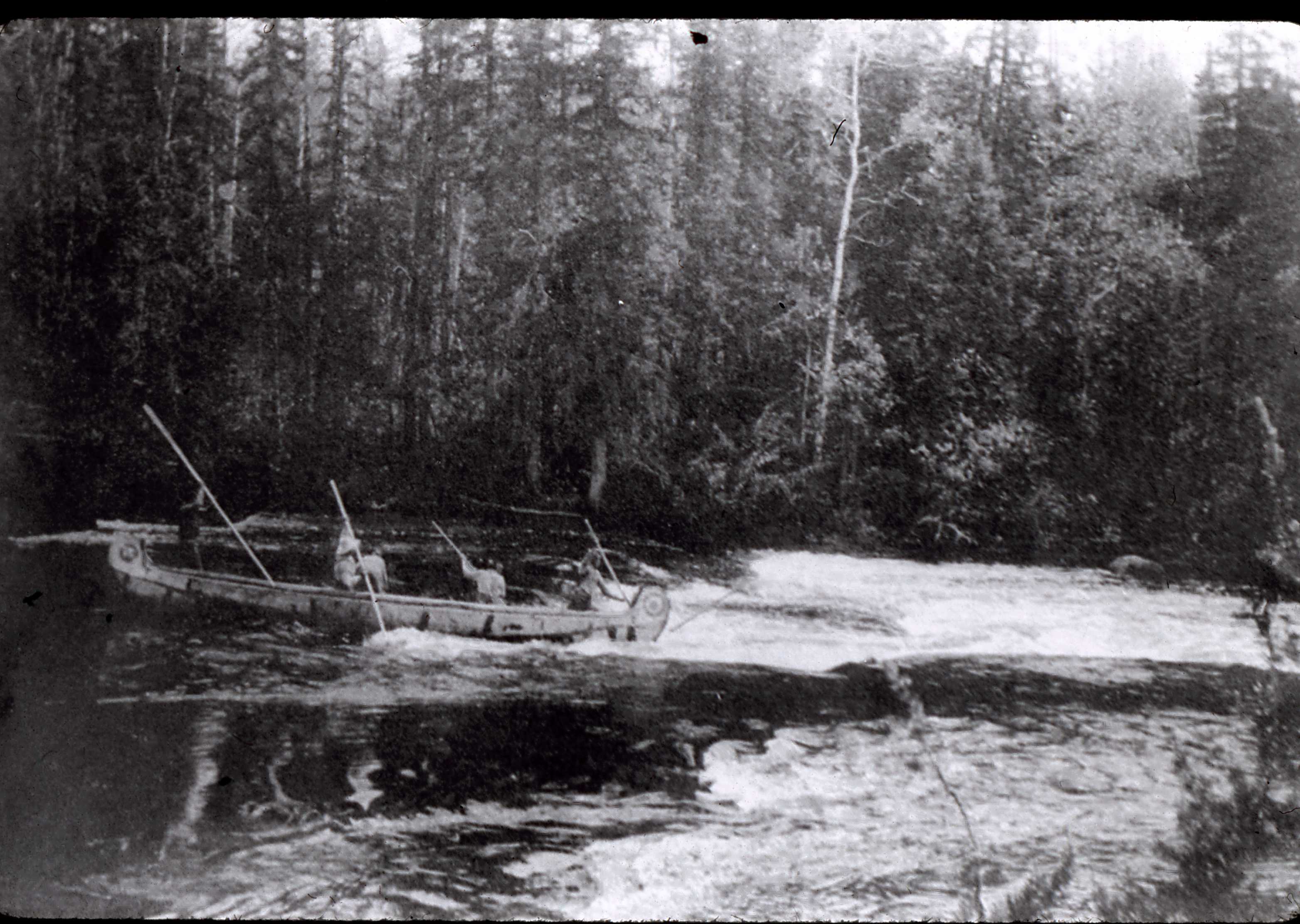Fur Traders Voyageurs and Explorers

With the coming of the first explorers also came, settlements and economic opportunities like the fur trade. Because of the fur trade, our region was developed and settled, forming many of the cities and towns.
First European Explorers |
|
Think back to your grade school history class and you were likely taught about a number of adventurous individuals who felt drawn to escape their European homeland and explore what later became Canada. History records show that the vast waters of Lake Superior were first viewed by European explorers when Etienne Brule and his indigenous guides navigated the St. Mary's River in 1622. While it is not likely Brule ventured along the north shore to Michipicoten, Brule Harbour between Old Woman Bay and Wawa is named after this early French adventurer. Pierre Esprit Radisson and Ménard Chouart des Groseilliers are said to have been the first Europeans to travel between James Bay and Lake Superior (possibly to Michipicoten). This began a long stream of explorer's, traders, scientists, artists and partners in the North West Company and the Hudson's Bay Company to pass through Michipicoten. Names like map-maker David Thompson, Philip Turnor, Alexander Mackenzie, Louis Agassiz, Sir Sanford Fleming, Dr. John Rae, Governor George Simpson, William Armstrong, and Frances Ann Hopkins to name a few |
Michipicoten Post 1725 to 1904 |
|
The centre of Canada's dynamic fur trade history for nearly 300 years. The Michipicoten First Nation's introduced the first European explorers to the rich fur-bearing forests of their home in the early 1600's. Michipicoten was the ideal location for a post to trade with local Ojibway as well as a rest and re-supply stop for traders and adventurers travelling across North America. Michipicoten was a mere 3 day trip by canoe from;
French traders were the first to secure trade with the Michipicoten Ojibway and build a post in 1725. This small post was built in a clearing on the opposite bank of the river where the Michipicoten meets the waters of the Magpie below Silver Falls. Following the Treaty of Paris in 1763 the French retreated from many posts across the land. Independent traders set up headquarters at Michipicoten between 1767 and 1783. Notable traders during this time included Alexander Henry the elder and Jean-Baptiste Nolin. Henry published his observations and travels in the area providing readers first-hand accounts of the landscape, the rich indigenous culture and interactions with early traders. Nolin purchased the Michipicoten trading post from Henry in 1777 and managed operations until 1781. Some of his descendants settled in the Red River area and are recognized as Metis. In 1783 the newly created Northwest Company took over the Michipicoten Post and thus began an aggressive rivalry with its competitor, the Hudson's Bay Company. |
Hudson Bay Company, Lake Superior District Headquarters - 1821 to 1904 |
|
In direct competition with Northwest Company operations at Michipicoten, in 1797 the Hudson's Bay Company built a post slightly upriver and across from the Michipicoten post. Outposts were also constructed at the mouths of the Agawa and Batchawana rivers along the east shore of Lake Superior towards Sault Ste. Marie. Amicable negotiations resulted in the closure of the Hudson's Bay Company post in 1802. Depleting furs soon reignited competition between the two companies and in 1816 the Hudson's Bay Company rebuilt downriver from their original location. This post remained in place until the two rival companies amalgamated and the Hudson's Bay Company re-established itself in the prime post buildings and Northwest Company Operations property on the south side of the river. In 1827 Michipicoten took over from Fort William as the headquarters for the Lake Superior District of the Hudson's Bay Company. Other important commercial and government activities at the post included;
The post was also home to a commercial fishing operation which supplied barrels of salted fish to outlying posts and markets as far away as Toronto, Montreal, Chicago, and Detroit. After 179 years of being a strategic and crucial link in North America's fur trade and exploration, the Michipicoten Post was officially closed for business in 1904. Archaeologists and students have visited Michipicoten River and the post site a number of times between the 1950's and 1980's, each time unearthing another layer of fascinating history at Michipicoten. Artifacts from the post area can be found in the rich collections of a number of Canadian museums and archives. |
Big Lakes, Big Memories
Welcome to The Municipality of Wawa, One of Ontario's Premier Four Seasons Destinations.










